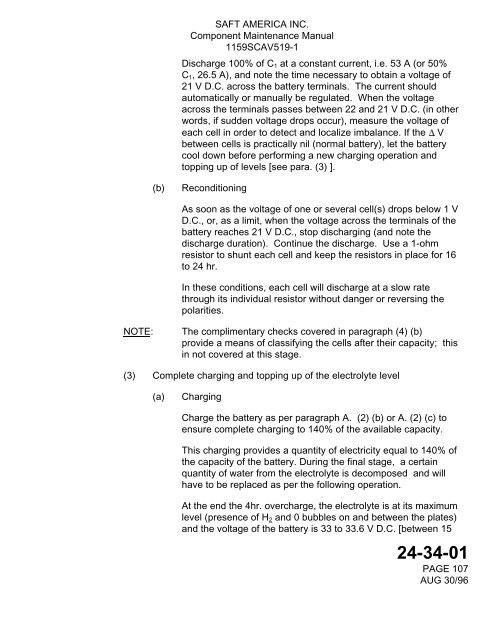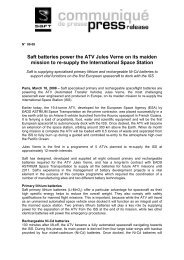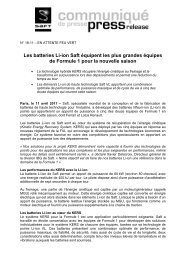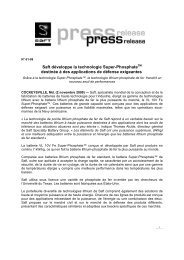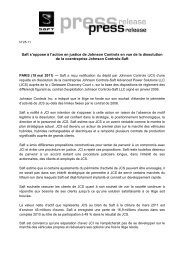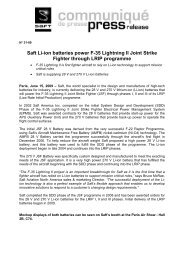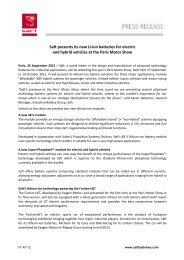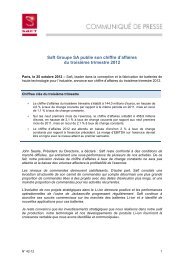SAFT ELECTRIC STORAGE BATTERY Gulfstream Aerospace P/N ...
SAFT ELECTRIC STORAGE BATTERY Gulfstream Aerospace P/N ...
SAFT ELECTRIC STORAGE BATTERY Gulfstream Aerospace P/N ...
Create successful ePaper yourself
Turn your PDF publications into a flip-book with our unique Google optimized e-Paper software.
<strong>SAFT</strong> AMERICA INC.<br />
Component Maintenance Manual<br />
1159SCAV519-1<br />
Discharge 100% of C1 at a constant current, i.e. 53 A (or 50%<br />
C1, 26.5 A), and note the time necessary to obtain a voltage of<br />
21 V D.C. across the battery terminals. The current should<br />
automatically or manually be regulated. When the voltage<br />
across the terminals passes between 22 and 21 V D.C. (in other<br />
words, if sudden voltage drops occur), measure the voltage of<br />
each cell in order to detect and localize imbalance. If the V<br />
between cells is practically nil (normal battery), let the battery<br />
cool down before performing a new charging operation and<br />
topping up of levels [see para. (3) ].<br />
(b) Reconditioning<br />
As soon as the voltage of one or several cell(s) drops below 1 V<br />
D.C., or, as a limit, when the voltage across the terminals of the<br />
battery reaches 21 V D.C., stop discharging (and note the<br />
discharge duration). Continue the discharge. Use a 1-ohm<br />
resistor to shunt each cell and keep the resistors in place for 16<br />
to 24 hr.<br />
In these conditions, each cell will discharge at a slow rate<br />
through its individual resistor without danger or reversing the<br />
polarities.<br />
NOTE: The complimentary checks covered in paragraph (4) (b)<br />
provide a means of classifying the cells after their capacity; this<br />
in not covered at this stage.<br />
(3) Complete charging and topping up of the electrolyte level<br />
(a) Charging<br />
Charge the battery as per paragraph A. (2) (b) or A. (2) (c) to<br />
ensure complete charging to 140% of the available capacity.<br />
This charging provides a quantity of electricity equal to 140% of<br />
the capacity of the battery. During the final stage, a certain<br />
quantity of water from the electrolyte is decomposed and will<br />
have to be replaced as per the following operation.<br />
At the end the 4hr. overcharge, the electrolyte is at its maximum<br />
level (presence of H2 and 0 bubbles on and between the plates)<br />
and the voltage of the battery is 33 to 33.6 V D.C. [between 15<br />
24-34-01<br />
PAGE 107<br />
AUG 30/96


